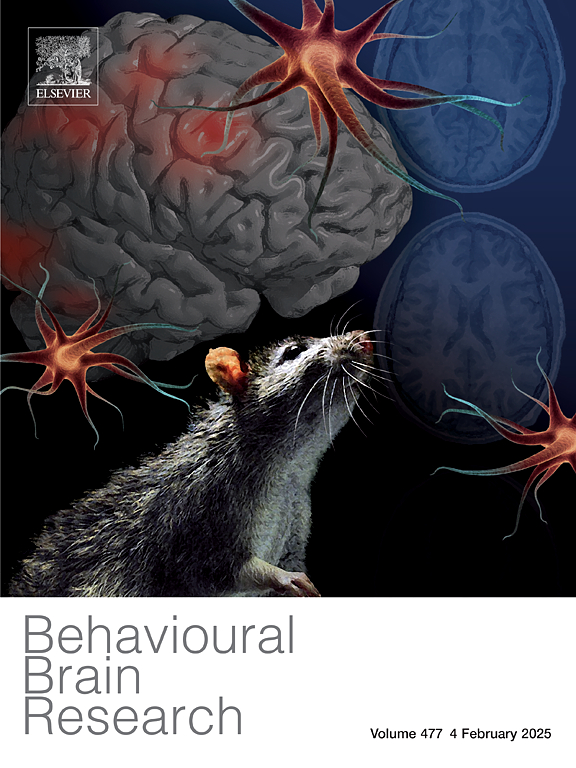Intranasal α-Synuclein induces progressive behavioral impairments in mice
IF 2.6
3区 心理学
Q2 BEHAVIORAL SCIENCES
引用次数: 0
Abstract
α-Synuclein (α-Syn) is implicated in the progression of Parkinson's disease, yet the disease's etiology remains unclear. This study aims to explore how α-Syn affects olfactory, motor, mood and cognitive functions if it initiates from the olfactory bulb. Mice were administered intranasal human AAV-α-Syn and subsequently evaluated for olfactory, motor, mood, and cognitive functions. Immunofluorescence was performed to assess dopaminergic neuronal damage. Results shown that olfactory dysfunction was evident as AAV-α-Syn-treated mice took longer to find buried pellets compared to controls at 3, 9, and 12 months post-instillation. Motor activity remained normal at 6 months but significantly declined at 9 months. Reduced tyrosine hydroxylase expression but increased amount of human α-Syn were observed in the substantia nigra at end of behavioral measurements. AAV-α-Syn mice showed reduced sucrose intake and decreased time in the center zone of the open field at 9 months. Cognitive deficits were observed in recognition function and social memory at 6 and 9 months, with impaired working memory at 12 months. Thus, intranasal AAV-α-Syn instillation in mice leads to progressive olfactory, motor, anxiety, depression-like, and cognitive dysfunctions, reflecting α-Syn pathology propagation.
α-Synuclein(α-Syn)与帕金森病的进展有关,但该病的病因仍不清楚。本研究旨在探讨如果α-Syn从嗅球开始,它将如何影响嗅觉、运动、情绪和认知功能。给小鼠鼻内注射人类 AAV-α-Syn,随后对其嗅觉、运动、情绪和认知功能进行评估。用免疫荧光法评估多巴胺能神经元损伤。结果显示,与对照组相比,AAV-α-Syn处理的小鼠在植入后3、9和12个月找到埋藏的颗粒的时间更长,因此嗅觉功能障碍很明显。运动活动在 6 个月时保持正常,但在 9 个月时显著下降。行为测量结束时,在黑质中观察到酪氨酸羟化酶表达减少,但人α-Syn的数量增加。AAV-α-Syn小鼠在9个月时表现出蔗糖摄入量减少和在空地中心区停留时间缩短。6个月和9个月时,小鼠的识别功能和社会记忆出现认知缺陷,12个月时工作记忆受损。因此,鼻内注射AAV-α-Syn会导致小鼠出现进行性嗅觉、运动、焦虑、抑郁样和认知功能障碍,这反映了α-Syn病理学的传播。
本文章由计算机程序翻译,如有差异,请以英文原文为准。
求助全文
约1分钟内获得全文
求助全文
来源期刊

Behavioural Brain Research
医学-行为科学
CiteScore
5.60
自引率
0.00%
发文量
383
审稿时长
61 days
期刊介绍:
Behavioural Brain Research is an international, interdisciplinary journal dedicated to the publication of articles in the field of behavioural neuroscience, broadly defined. Contributions from the entire range of disciplines that comprise the neurosciences, behavioural sciences or cognitive sciences are appropriate, as long as the goal is to delineate the neural mechanisms underlying behaviour. Thus, studies may range from neurophysiological, neuroanatomical, neurochemical or neuropharmacological analysis of brain-behaviour relations, including the use of molecular genetic or behavioural genetic approaches, to studies that involve the use of brain imaging techniques, to neuroethological studies. Reports of original research, of major methodological advances, or of novel conceptual approaches are all encouraged. The journal will also consider critical reviews on selected topics.
 求助内容:
求助内容: 应助结果提醒方式:
应助结果提醒方式:


